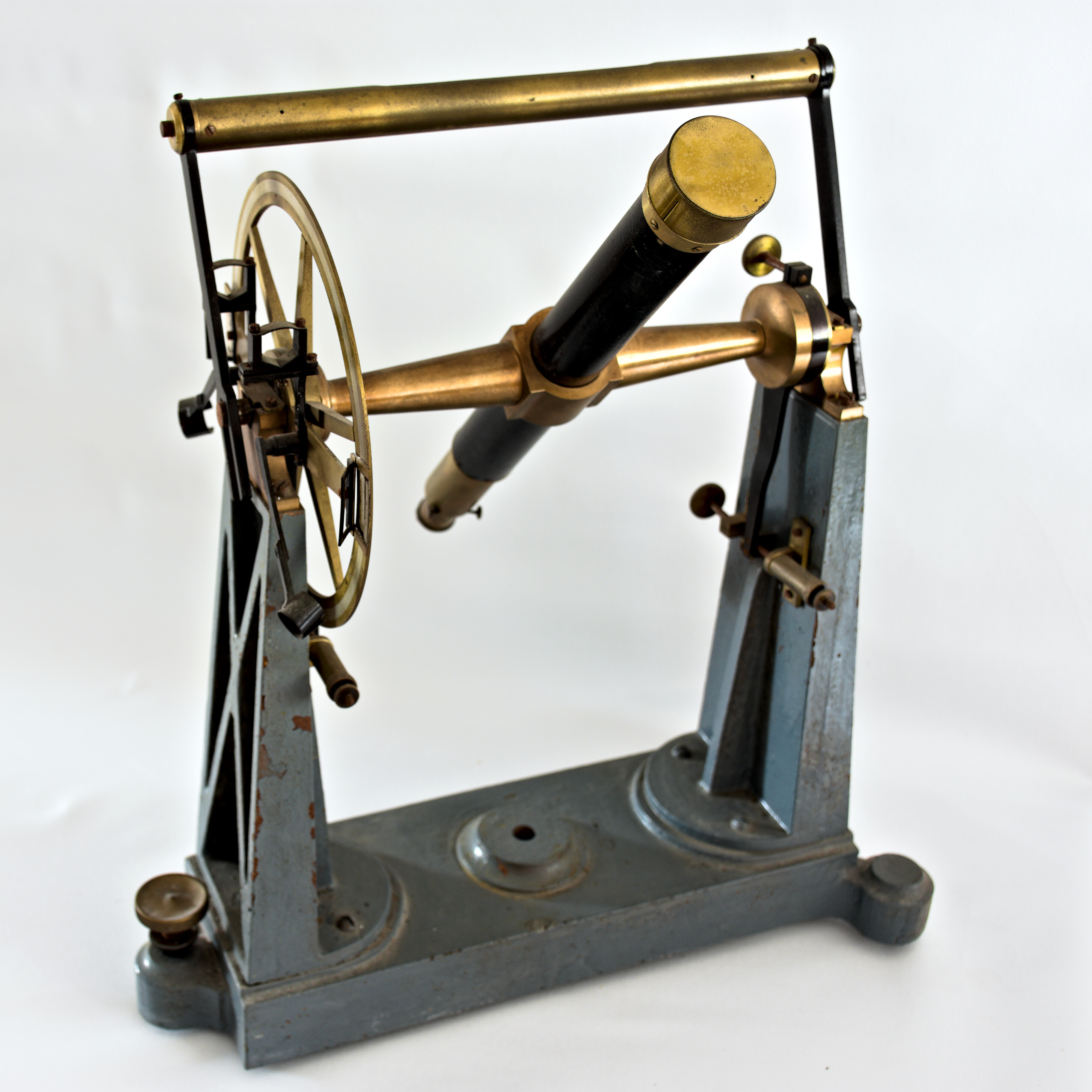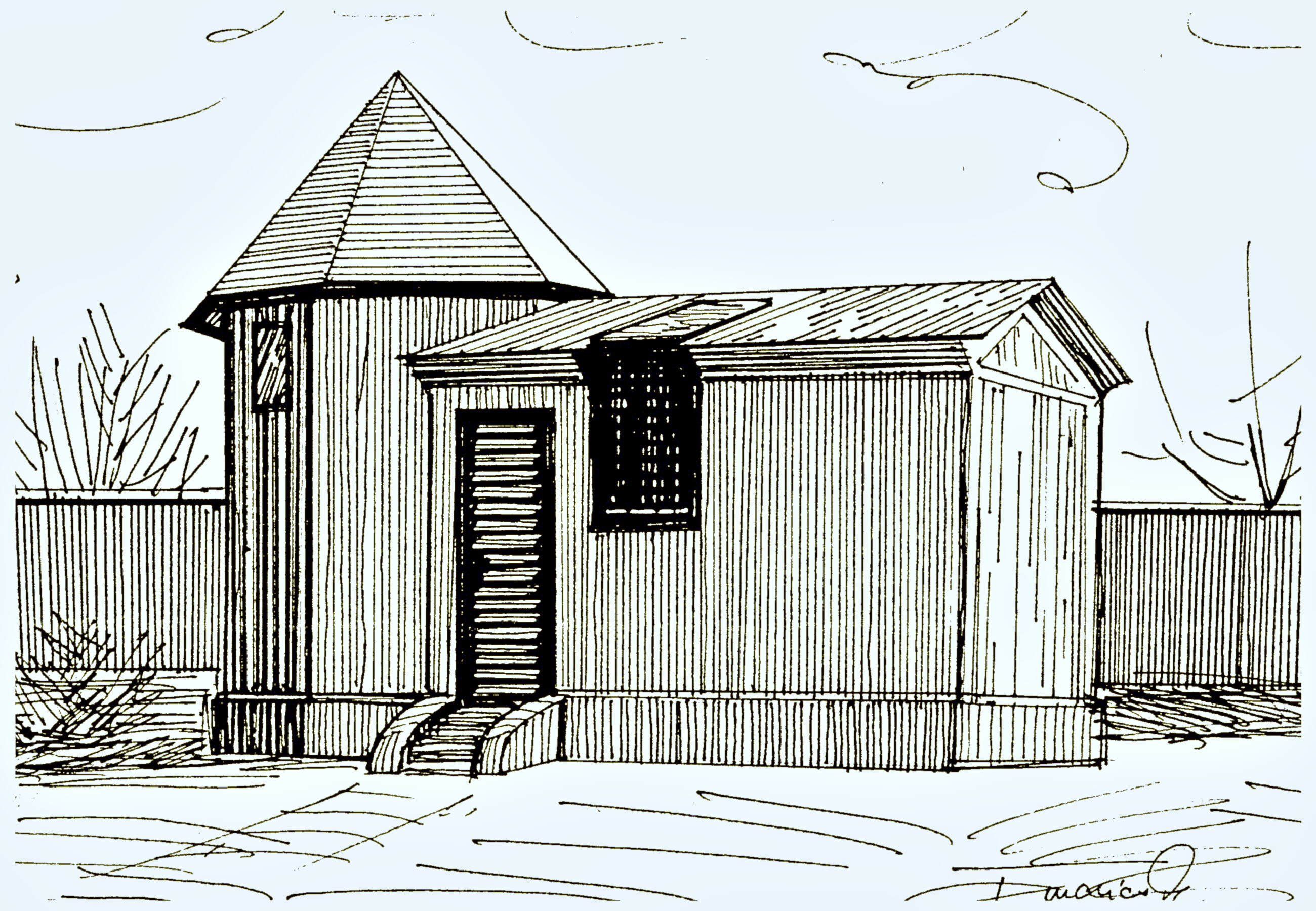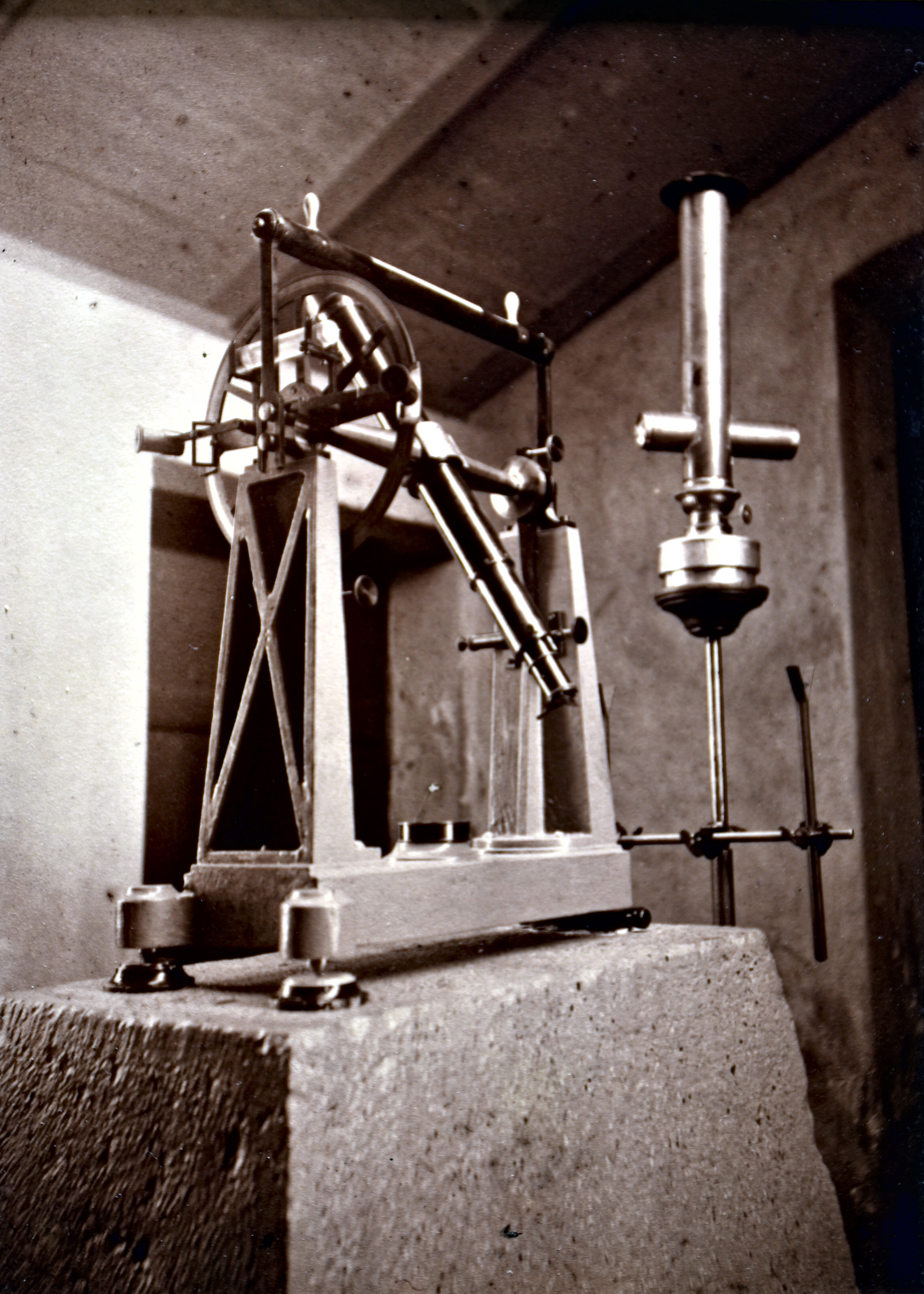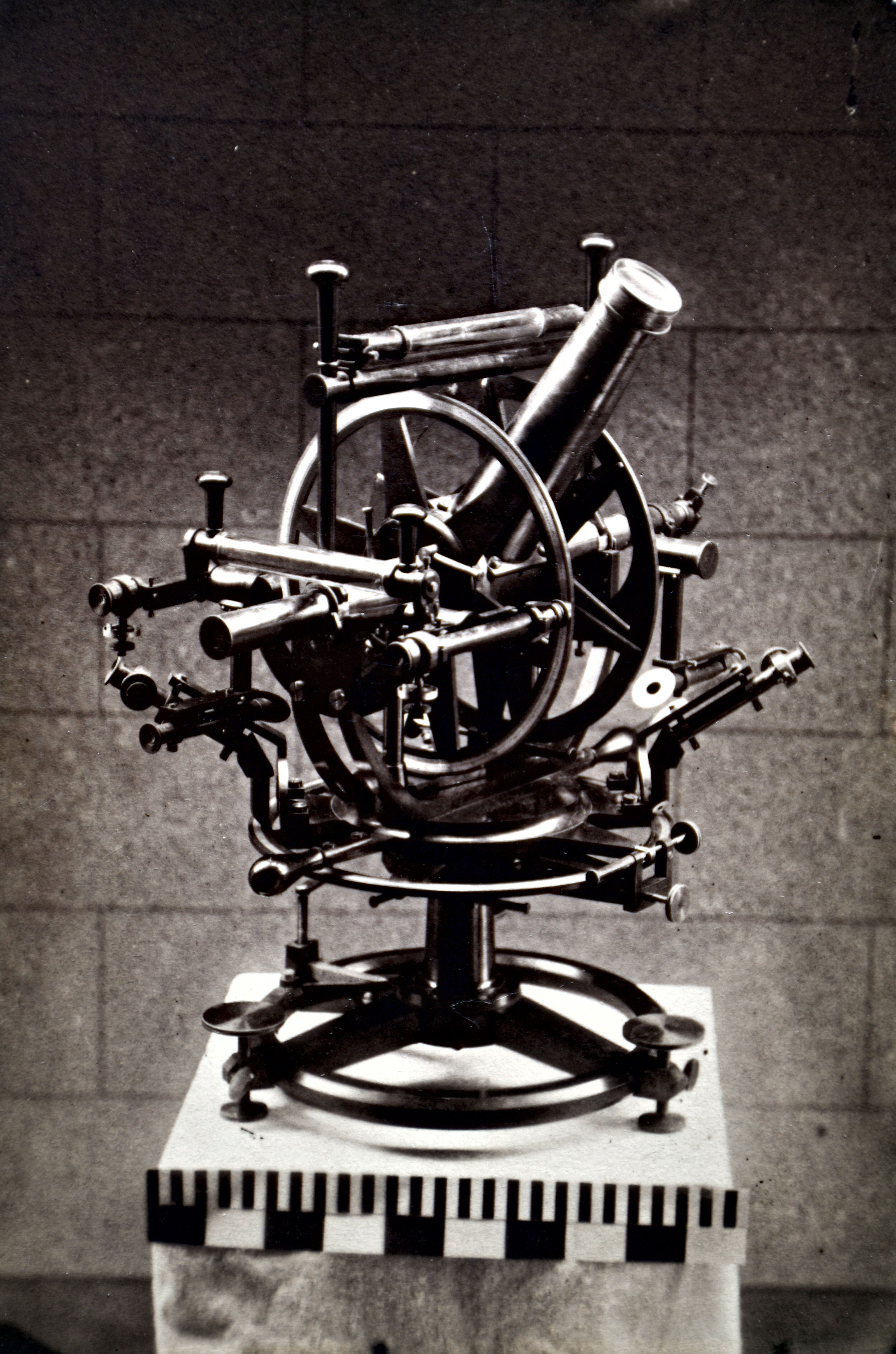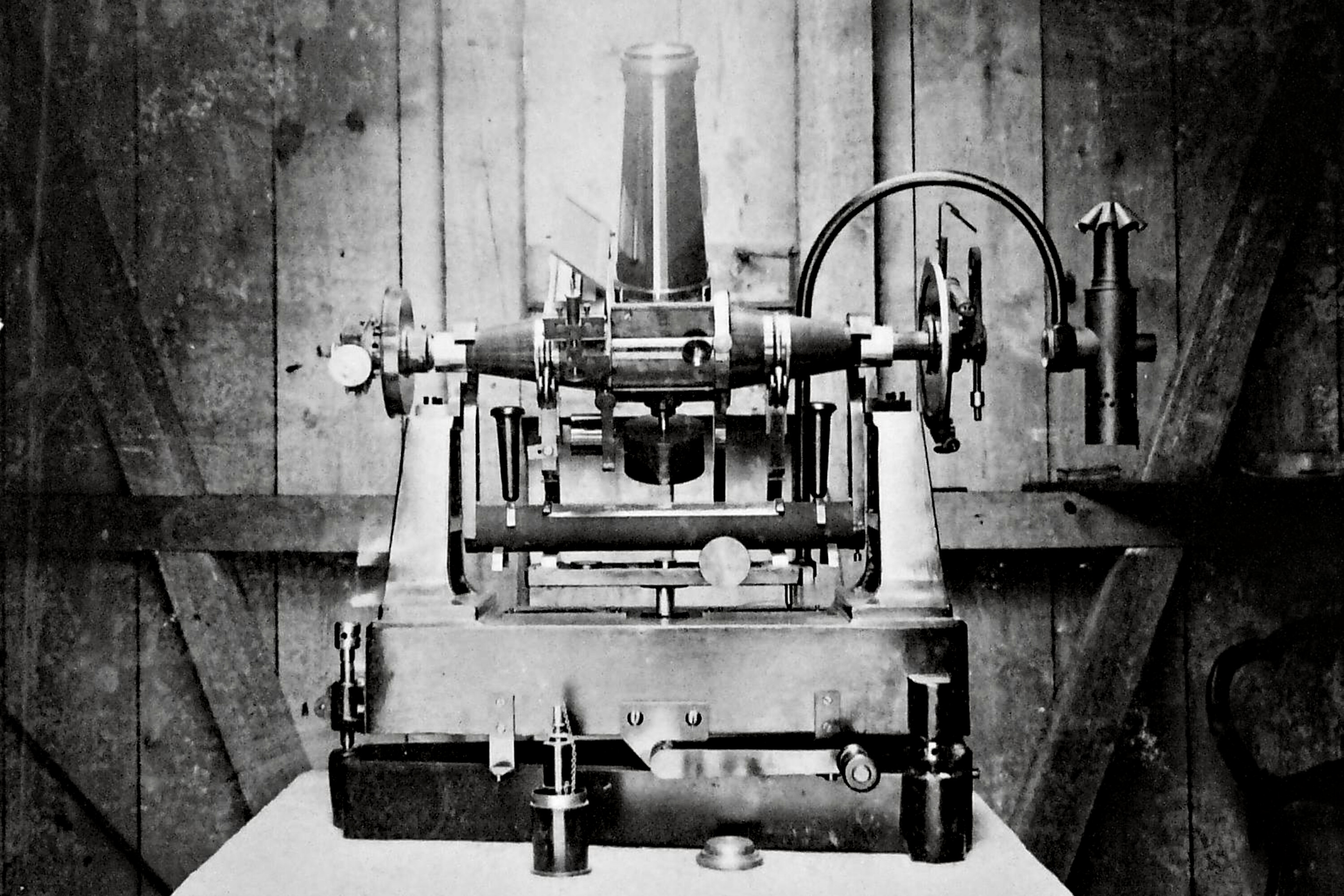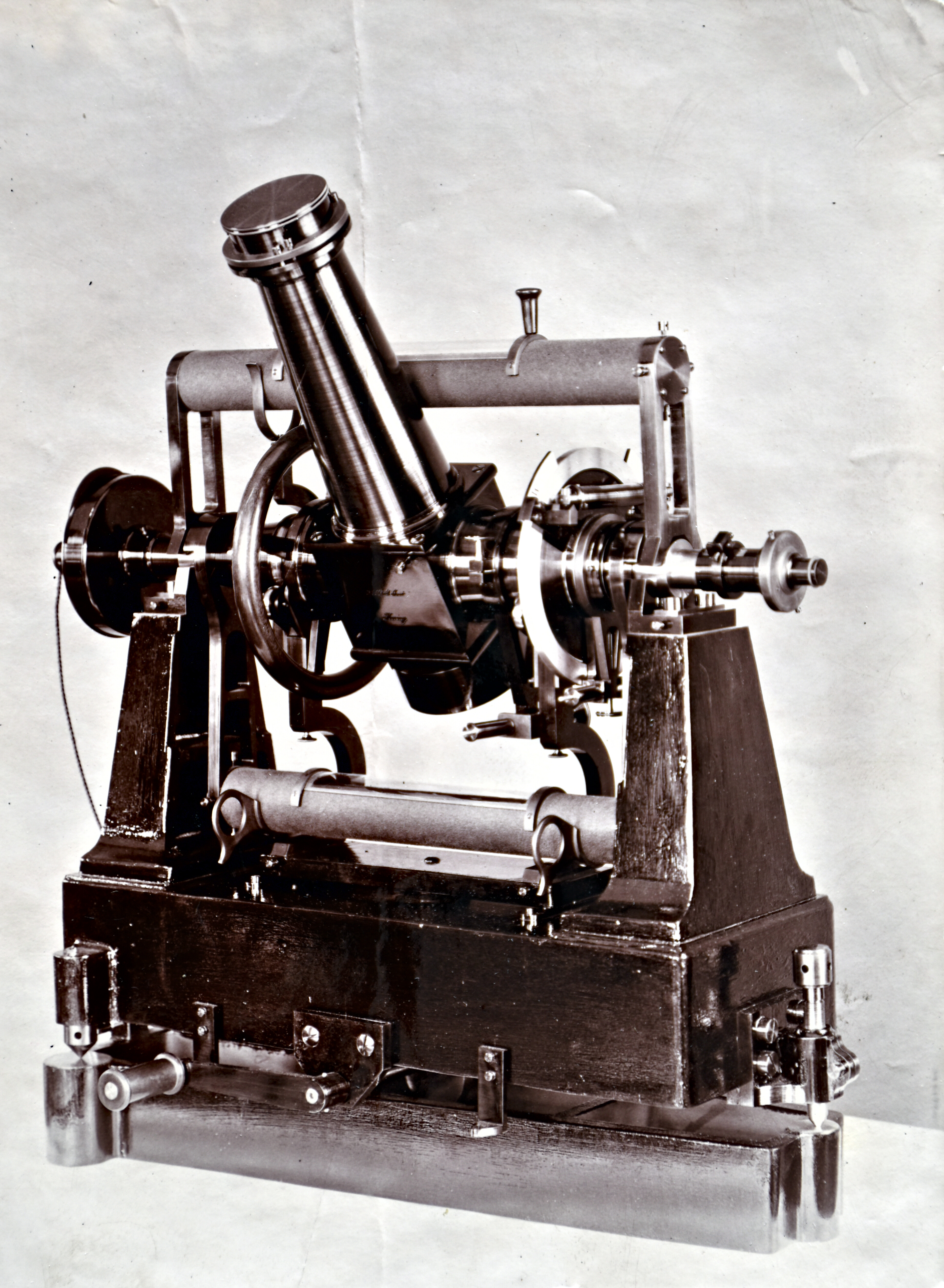Object of the month – Gothard’s transit instruments
A transit instrument (Fig. 1) was used to observe the transit of stars over the meridian. The accurate determination of this event provided declination and right ascension in case of an unknown star, while for a star of already known coordinates it provided stellar time. Two kinds of transit instruments were used. To measure the position of a star a meridian circle was used, while a transit tube made it possible to determine time exactly.
A meridian circle is made up of a telescope fixed perpendicularly to the horizontal axis of rotation going east-west, and „wheels” with degree scales at the ends of the axis. The telescope moved along only one axis, in the plane of the meridian of the observation point. The zero of the scale was denoted by the plane of the celestial equator, that is the projection of the Equator of the Earth. For stars north of this celestial equator a positive declination was measured when transiting the cross hair, while for stars in the south had negative declination at transit, the degree measure of which was read off from the circular scale at the end of the axis.
To determine right ascension an accurate clock measuring stellar time was needed as the right ascension of a transiting star is identical to stellar time. Exact determination of the moment of meridian transit was helped by practically constructed cross hairs in the eyepiece. The structure of the transit tube that determines stellar time is similar to the meridian circle, but smaller circles were applied on the axis ends as the scale was used to set the coordinates of stars and not for measurement. Observation in this case meant exact recording of the meridian transit of stars with known coordinates. This purpose was achieved by using a chronograph in the previous section, with the help of which Gothard carried out chronometric measurements to one tenth of a second.
„As the instrument to be set up in the meridian would be too difficult or even impossible to place in the main building, due to its location, in the summer of 1882 I built a smaller building on the meridian under a right angle and on its east end a small tower with a diameter of 3 m and with a revolving, conic tower for an equatorial to be purchased later. That is the building where the transit tube is placed, which I could just as well name meridian because it is supplied with an extremely finely scaled Reichenbach-circle.” – Gothard wrote in his paper submitted to department III of the Hungarian Academy of Sciences in 1883. (Gothard Jenő: Spektrálfotografiai tanulmányok. Értekezések a Természettudományok Köréből, XXI. kötet, 2. szám, 1891.)
The instrument (Fig. 3) set up in the Herény transit house (Fig. 2) was produced in the Ógyalla workshop by Miklós Konkoly Thege in 1879. The simple instrument made up of theodolite parts, shown in figure 4.32 was bought by Gothard in 1882, but a few years later he entered the European "market of instruments" with his universal transit instrument produced by himself. The new universal observation device (Fig. 4) was sent to the observatory of Bothkamp in 1888. The masterpiece produced in the Herény workshop provided exact stellar time for setting the largest refractor of the epoch (diameter of the objective: 29.3 cm, focal length of the objective: 4.9 m) in the first astrophysical observatory of contemporary Germany.
The transit instrument in Bothkamp brought a new order to Gothard. In September 1891, on the order of Konkoly, he designed a transit instrument for the Central Meteorological Institute in Budapest. At this time appeared the new person showing an interest in the passage instrument:
„My deeply respected friend, In Munich you asked me whether I would be willing to make a transit instrument for you, similar to the one you saw in Bothkamp. So please do not resent my bid to make such an instrument. The Central Meteorological Institute of Budapest has ordered such an instrument from me and I believe I could sell them 10% cheaper if two were produced at the same time.” – Gothard wrote in his letter on the 29th of September 1891 to Maximilian Wolf, director of the Heidelberg Observatory. (Letter from Jenő Gothard, Universitätsbibliothek Heidelberg, Hs 3695)
As a result of the meeting in Munich, a beautiful observation instrument came to life and we can follow its realization from the moment of its conception to its birth in the letters documenting the consultations of two European scientists between the 29th of September 1891 and the 18th of October 1892. We can follow the details of how the transit instrument of Heidelberg (Fig. 5) was born in 25 letters, on 78 pages. In Jenő Gothard and Max Wolf’s discussion, apart from working out modern technical solutions necessary for the scientific task, accurate determination of time and localization, there are also a lot of references to the contemporary industrial background, which was indispensable for constructing the perfect instrument.
Written by József Kovács, PhD
